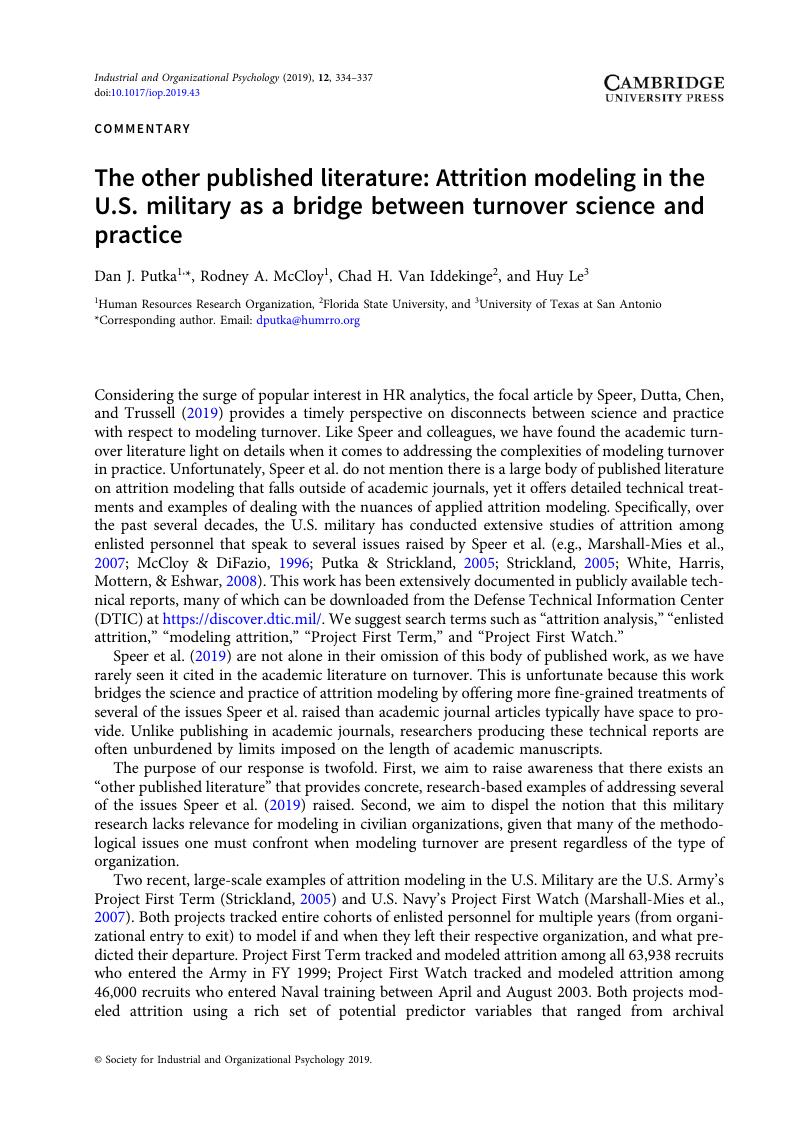Crossref Citations
This article has been cited by the following publications. This list is generated based on data provided by Crossref.
Congard, Anne
Delicourt, Alice
Dauvier, Bruno
and
Gros, Frédérique
2022.
Personality trait and subjective work experience fit (P-SWE fit) as an explanation for voluntary turnover.
Military Psychology,
Vol. 34,
Issue. 1,
p.
68.



